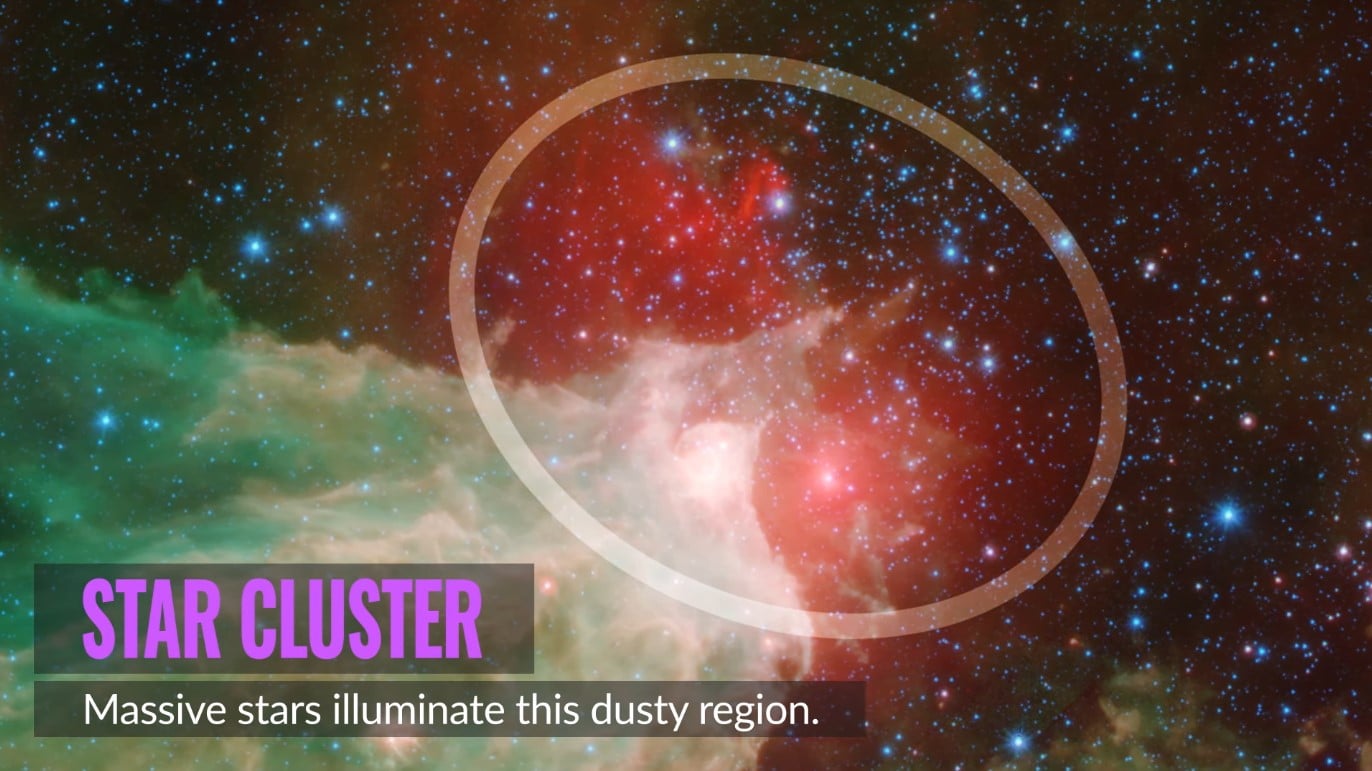NASA’s Spitzer Telescope, known for beautiful portraits of the universe, recently took a portrait of a stellar family in a section of the universe. The photos include beautiful clusters of stars surrounded by colorful clumps of gas and dust they were made from. NASA considers it a “generational stellar portrait,” as many clusters are older and more advanced than others.
According to the video and press release provided by the space agency, the grand green and orange filling in the image came from a nebula very far away, a dense cloud of gas and dust. It is explained to be a part of a much larger cloud that became faded by the radiation coming from the stars. Brighter areas are what’s illuminated by much larger stars from a cluster that extends above the white spot. The white color on the photograph is a mix of four colors – blue, green, orange and red, and each one of them showcases a different wavelength of infrared light which is invisible to our eyes.
If you take a look at the left side of the image, you can see a dark pattern that extends horizontally and stretches through the green cloud of gas and dust. It hosts a cluster flattered by red and yellow dots which represent baby stars. The area is called Cepheus C, and it has a dense concentration of gas and dust, causing an abundance in star formation. The vast majority of material could be thrown out, caused by solar winds that grow in strength as the baby stars evolve, as well as following their explosion and death, NASA explains.
Scientists call this area Cepheus C because of the constellation Cepheus, as well as being close to the constellation Cassiopeia. The cluster is around 6 light-years long, located 40 light-years from the illuminated spot at the top of the nebula. The image of the stellar family reveals how beautifully different worlds are portrayed in space, making the universe itself look like a piece of art.
The image reveals a second large nebula visible on the right side of the image. It is near another cluster called Cepheus B. The cluster is located within a few thousand light-years from the sun. This image is a perfect family portrait of the stellar family, because it reveals what infants, parents, grandparents and more look like in the star-forming regions, displayed in different colors.
While Spitzer produced a beautiful photo of the star nebulas and clusters, it might be one of the last. Earlier this month, NASA announced that the Spitzer Space Telescope will shut down early next year.
“On January 30, 2020, NASA’s Spitzer Space Telescope will transmit the final science and engineering data to mission control and then be commanded off, ending its amazing and surprising mission,” wrote Lisa Storrie-Lombardi, Spitzer’s project manager at NASA’s Jet Propulsion Laboratory in Pasadena, California.





